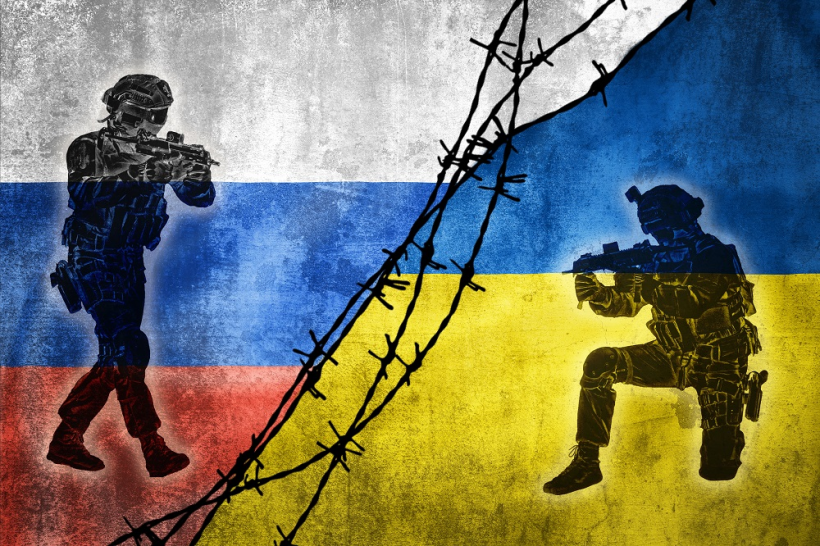
Introduction
The Russia-Ukraine conflict, which erupted into a full-scale war on February 24, 2022, stands as one of the biggest geopolitical crises of this century. Sparked by old tensions, disputes over territory, and intense rivalries between nations, the war has led to terrible human suffering shaken economies, and caused instability across the globe. This piece dives into where the conflict began major events, its effects on people and economies, and how it influences global relations.
Historical Background
1. The Soviet Era and Ukraine’s Independence
Ukraine remained a part of the Soviet Union until it fell apart in 1991. After becoming an independent nation, Ukraine kept on working with Russia but also tried to build stronger ties with Western nations.
- 1994 Budapest Memorandum: The U.S., the U.K., and Russia agreed to respect Ukraine’s independence when Ukraine decided to hand over its nuclear weapons.
- 2004 Orange Revolution: Pro-Western demonstrations pushed Ukraine to move away from Russia’s strong influence.
- 2014 Euromaidan Protests: After rejecting a deal with the EU, Ukraine’s pro-Russian leader Viktor Yanukovych was removed from power.
2. Crimea’s Annexation and Donbas Conflict
In 2014, Russia took control of Crimea saying it wanted to defend Russian-speaking communities. A pro-Russian uprising then began in Donbas located in eastern Ukraine.
- Minsk Agreements (2014 and 2015): These were ceasefire plans that aimed to stop the fighting in Donbas but never succeeded.
- Ongoing Fighting: The conflict continued at a steady pace leading to over 14,000 deaths by 2022.
War Intensifies (2022-Today)
1. Russia’s Invasion (February 2022)
Russia began a large-scale attack on February 24, 2022 calling it a “special military operation” to “denazify” Ukraine.
- Early Progress: Russian troops targeted Kyiv, Kharkiv, and areas in the south.
- Ukraine’s Defense Effort: Fierce opposition combined with Western weapons support, stopped Russia from pushing further.
2. Major Clashes and Changing Frontlines
- Battle of Kyiv (Feb-March 2022): Ukrainian forces pushed Russian troops out of the capital.
- Siege of Mariupol (March-May 2022): After fierce battles, Russia took control of the city.
- Kherson and Kharkiv Counteroffensives (2022): Ukrainian advancements regained lost ground.
- Bakhmut and Soledar (2023): Fighting here caused major losses on both sides.
- 2024 Updates: The conflict remains deadlocked, with ongoing drone strikes and trench warfare.
Humanitarian Effects
1. Civilian Deaths and Displacement
- Deaths: The UN estimates over 10,000 civilians have lost their lives.
- Refugees: More than 6 million Ukrainians escaped to other countries.
- Internally Displaced Persons (IDPs): 5 million had to leave their homes but stayed within Ukraine.
2. War Crimes and Human Rights Violations
- Bucha Massacre (2022): Russian forces executed civilians here.
- Mariupol Theater Bombing (2022): Airstrikes killed hundreds in this bombing.
- Deportations: Reports claim Ukrainian children were transferred to Russia.
Economic Consequences
1. Effect on Ukraine
- GDP Drop in 2022: The economy contracted by 30 percent.
- Infrastructure Destruction: The World Bank estimates over $150 billion in damages.
- Agriculture Impact: Ukraine, a top grain exporter, struggled as Black Sea ports were blocked.
2. Global Economic Ripple Effects
- Energy Turmoil: Sanctions on Russian oil and gas caused prices to spike.
- Food Price Surge: Ukraine’s grain export issues disrupted the global market.
- Russia’s Trade Shift: Western sanctions hindered trade, but Russia adjusted by trading oil with China and India.
Worldwide Political Impacts
1. NATO and the West’s Actions
- Military Aid: The U.S. and EU sent over $100 billion worth of military equipment like tanks, drones, and missiles.
- NATO Expansion: Sweden and Finland applied to join NATO, with Finland joining in 2023.
- Economic Sanctions: Russia lost access to SWIFT and faced frozen assets along with trade restrictions.
2. Russia’s Isolation and Changing Alliances
- China’s Support: Beijing offered both financial and political help to Russia.
- BRICS Collaboration: Russia strengthened its partnerships with countries like India, Iran, and several African nations.
- Domestic Crackdowns: Putin took action to silence critics and detained anti-war activists.
3. Global South Disputes
Several developing countries, like India, South Africa, and Brazil, chose not to take sides. Instead, they pushed to hold peace talks over introducing sanctions.
Possible Future Outcomes
1. Ongoing Stalemate
- Fighting in trenches keeps going without any big wins for either side.
- Ukraine depends on Western support while Russia brings in more soldiers.
2. Negotiated Peace Deal
- A possible temporary truce that does not bring true peace.
- Certain concessions might happen such as Crimea staying with Russia or giving Donbas some autonomy.
3. Risk of Escalation
- NATO and Russia may clash directly through areas like Belarus or the Baltic region.
- Russia has signaled it might consider small-scale nuclear weapons as a threat.
Final Thoughts
The war between Russia and Ukraine goes beyond being just a local clash. It has changed the way the world approaches security, trade, and diplomacy. Ukraine is fighting to survive, while Russia risks being cut off from the rest of the world for years to come. Western nations play a key role in giving support, but disagreements among nations in the Global South make isolating Moscow harder. Whether this war ends with a stalemate or a peace agreement, it will shape how countries relate to one another long into the future. The toll on human lives remains the saddest part, with countless people displaced and many lives lost. The world watches hoping to see an end that brings fairness and calm.
